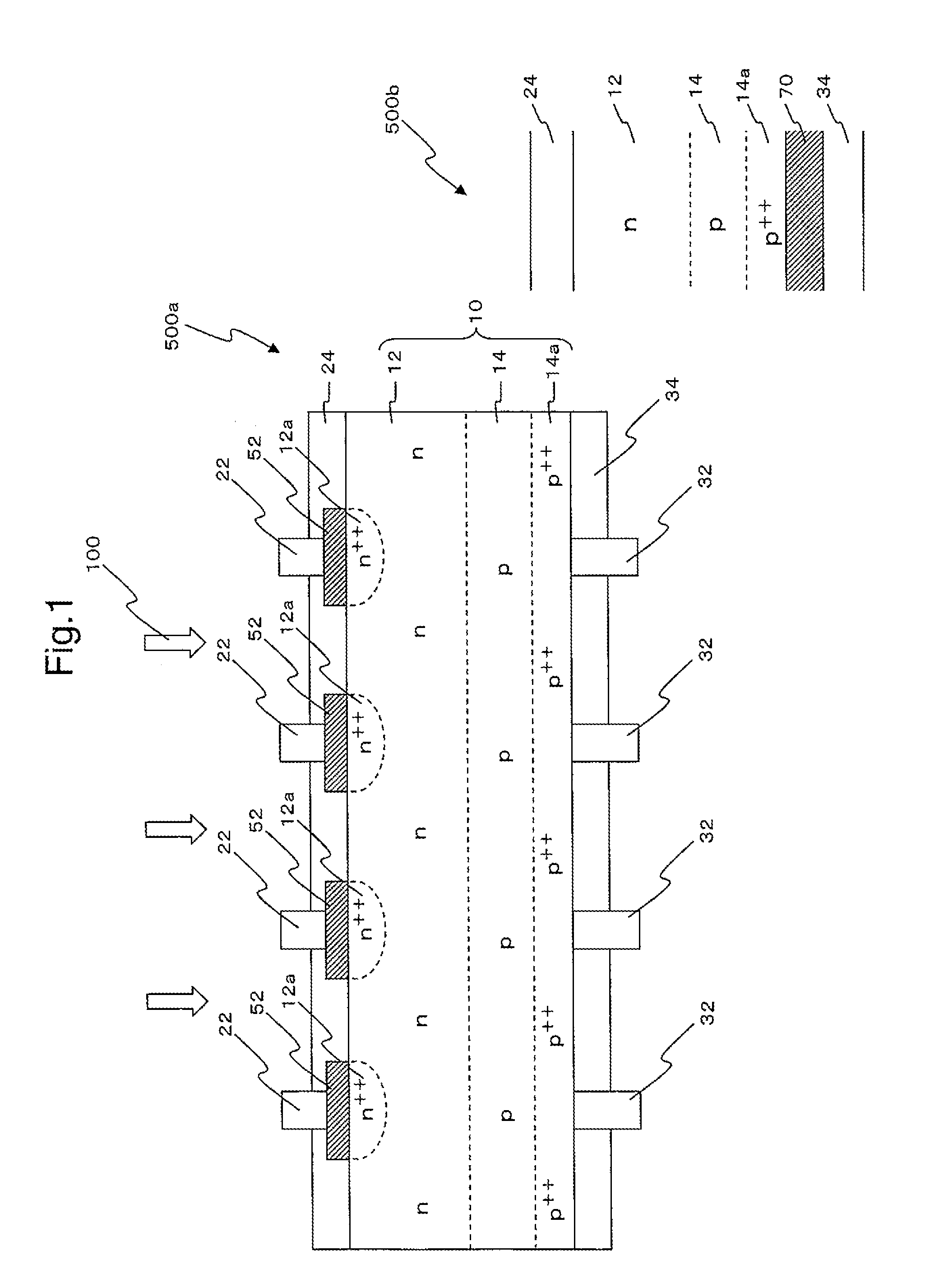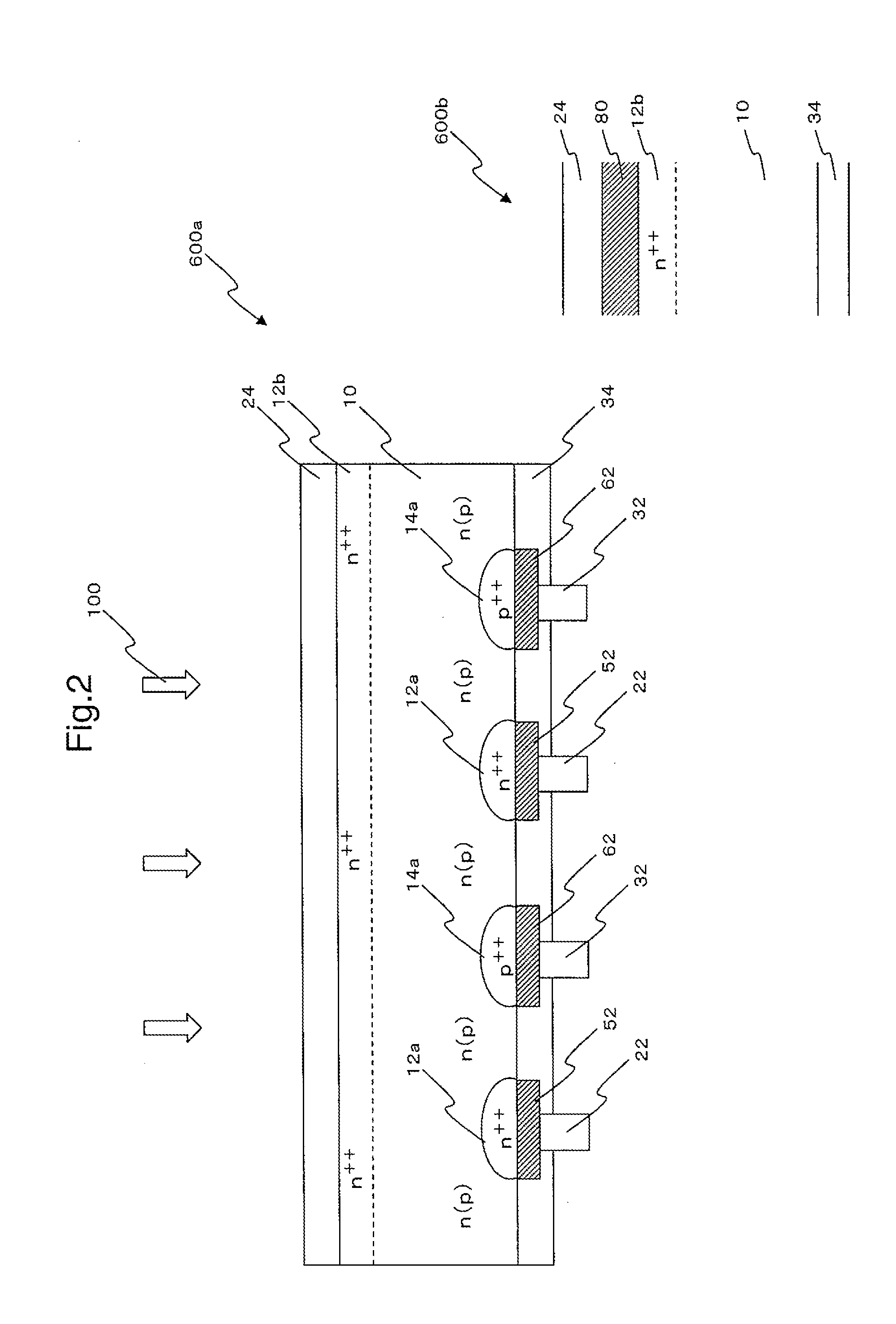Semiconductor laminate, semiconductor device, and production method thereof
a semiconductor and semiconductor technology, applied in the field of semiconductor devices and semiconductor laminates, can solve the problems of limited application, inadequate durability in air stability, and inability to meet the requirements of use, and achieve favorable semiconductor properties, favorable semiconductor properties, and favorable semiconductor properties
- Summary
- Abstract
- Description
- Claims
- Application Information
AI Technical Summary
Benefits of technology
Problems solved by technology
Method used
Image
Examples
examples
First Present Invention
example a1
Fabrication of Boron (B)-Doped Silicon Particles
[0776]Silicon particles were fabricated by laser pyrolysis (LP) using a carbon dioxide (CO2) laser and using monosilane (SiH4) gas as the raw material. At this time, B2H6 gas was introduced together with the SiH4 gas to obtain boron-doped silicon particles.
[0777]The doping concentration of the resulting boron-doped silicon particles was 1×1021 atoms / cm3. In addition, the mean primary particle diameter of the resulting boron-doped silicon particles was about 5.5 nm (maximum particle diameter: 15 nm, minimum particle diameter: 2 nm), and the value of variance was 6 nm. In addition, the degree of crystallization of the resulting boron-doped silicon particles was 5%.
[0778](Preparation of Dispersion)
[0779]Boron-doped silicon particles obtained in the above manner were ultrasonically dispersed in isopropyl alcohol (IPA) to obtain a silicon particle dispersion having a solid fraction concentration of 2% by weight.
[0780](Preparation of Substra...
example a2
Fabrication of Phosphorous (P)-Doped Silicon Particles
[0804]Silicon particles were fabricated by laser pyrolysis (LP) using a carbon dioxide (CO2) laser and using monosilane (SiH4) gas as the raw material. At this time, PH3 gas was introduced together with the SiH4 gas to obtain phosphorous-doped silicon particles.
[0805]The doping concentration of the resulting phosphorous-doped silicon particles was 1×1021 atoms / cm3. In addition, the mean primary particle diameter of the resulting phosphorous-doped silicon particles was about 8.0 nm (maximum particle diameter: 16 nm, minimum particle diameter: 4 nm), and the value of variance was 4.3 nm. In addition, the degree of crystallization of the resulting phosphorous-doped silicon particles was 12%.
[0806](Preparation of Dispersion)
[0807]Phosphorous-doped silicon particles obtained in the above manner were ultrasonically dispersed in isopropyl alcohol (IPA) to obtain a silicon particle dispersion having a solid fraction concentration of 1% b...
PUM
 Login to View More
Login to View More Abstract
Description
Claims
Application Information
 Login to View More
Login to View More - R&D
- Intellectual Property
- Life Sciences
- Materials
- Tech Scout
- Unparalleled Data Quality
- Higher Quality Content
- 60% Fewer Hallucinations
Browse by: Latest US Patents, China's latest patents, Technical Efficacy Thesaurus, Application Domain, Technology Topic, Popular Technical Reports.
© 2025 PatSnap. All rights reserved.Legal|Privacy policy|Modern Slavery Act Transparency Statement|Sitemap|About US| Contact US: help@patsnap.com



